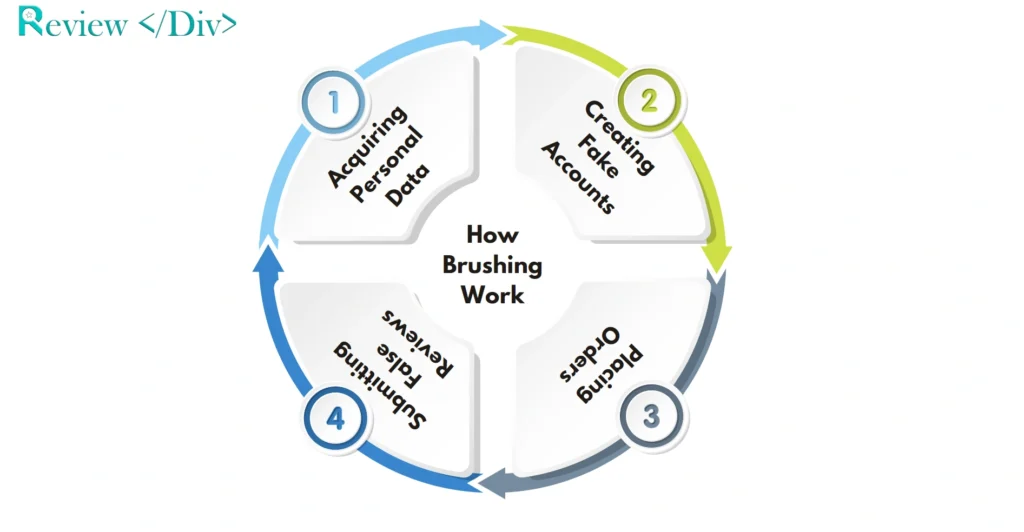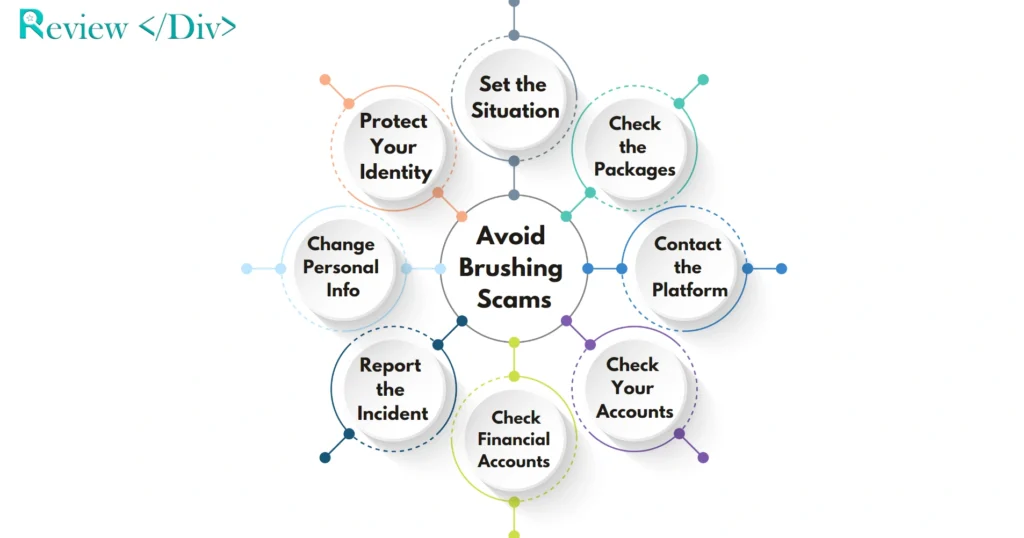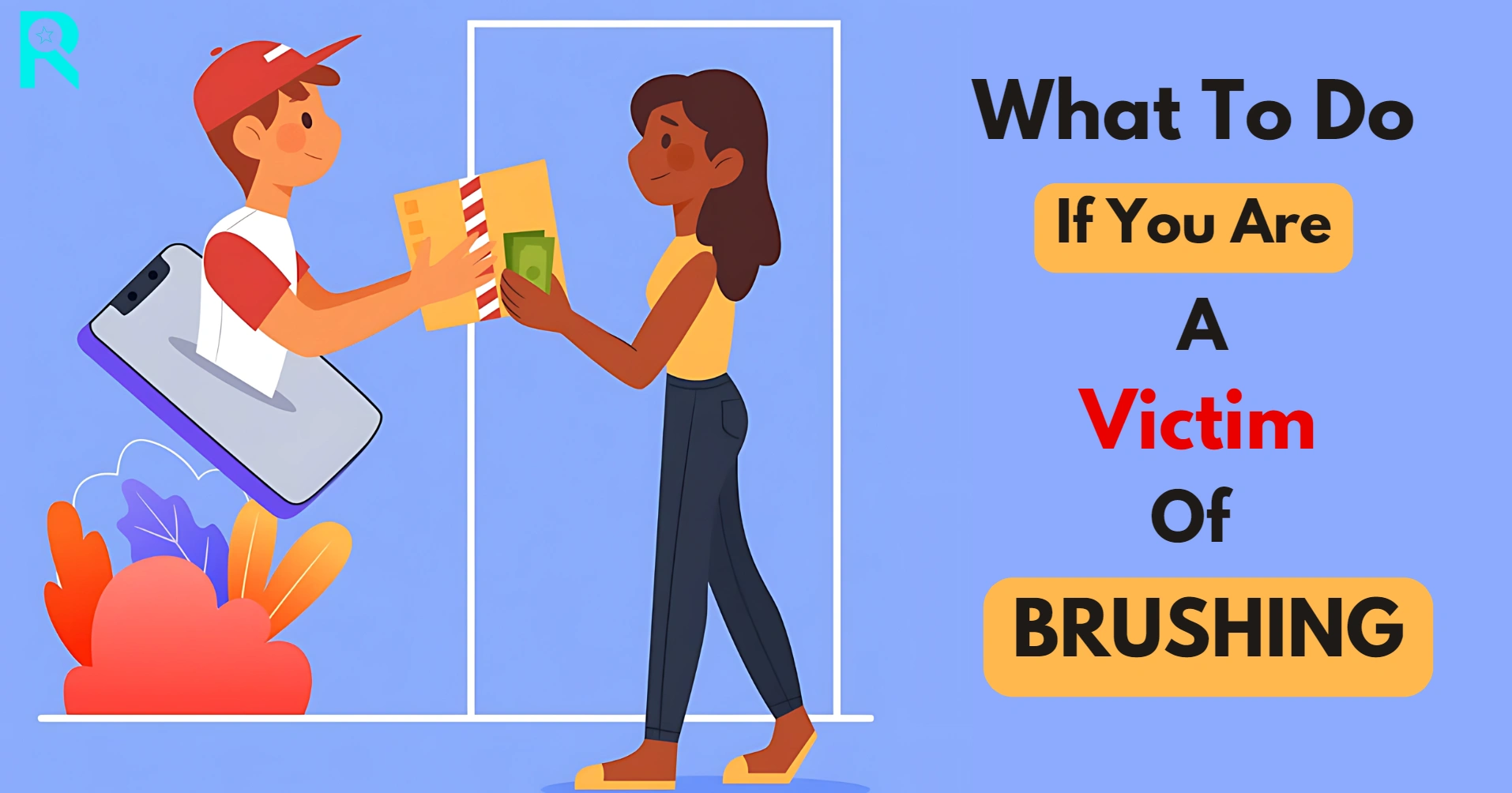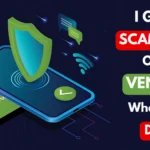Nowadays, brushing scams have occurred as a deceptive tactic where individuals receive unsolicited packages from online sellers. While it seems like a harmless surprise, the reality behind these free deliveries is more concerning.
Brushing scams are designed to inflate sales figures and generate fake reviews, ultimately misleading consumers and boosting a seller’s reputation on various e-commerce platforms. For victims, the real issue lies in the misuse of their personal information, raising serious privacy concerns.
In this article, we will explain what a brushing scam is, discuss all aspects of it, and provide guidance on what to do if you are a victim.
What Are Brushing Scams?
Brushing scams involve third-party sellers who use a victim’s personal information to create fake orders. These orders result in small, inexpensive items being shipped to the victim’s address. The seller then posts a positive review on the platform, making it appear as though the victim is a satisfied customer.
This practice is particularly dominant in large online marketplaces like Amazon and eBay. While the packages seem harmless, they signify that personal data has been used, without the victim’s knowledge or consent.
Although brushing scams do not seem financially harmful at first glance, they have significant privacy risks. The fact that a seller can access and misuse your personal information to create fake orders is alarming.
This breach of privacy can lead to more severe effects, such as identity theft or further unauthorized use of your data. The unsolicited packages are just a symptom of a larger issue like your personal information could be exploited in other fraudulent activities.
How Brushing Scams Work?
Brushing scams follow a relatively simple process, but their impact can be widespread. Here’s how the Brushing Scams Operate.

1. Acquiring Personal Data
Scammers first obtain personal details, such as names and addresses. This information can be sourced through data breaches, phishing schemes, or purchased from underground markets that traffic in stolen data.
2. Creating Fake Accounts
Once scammers have obtained stolen personal information, they proceed to create fake accounts on well-known e-commerce platforms. These accounts are designed to mimic genuine customer profiles, including realistic-sounding usernames, profile pictures, and fabricated purchase histories.
3. Placing Orders
Using the fake accounts, scammers place orders for their own products, using the victims’ details for delivery. The items sent are typically low-cost goods like inexpensive electronics, jewelry, or novelty items.
4. Submitting False Reviews
After the goods are delivered, the scammers access the fake accounts to leave glowing reviews for their products. These fabricated reviews improve the product’s rating and increase its visibility on the platform, making it more attractive to genuine customers.
How to Identify Brushing Scams?
If you’re concerned that you might be a victim of a brushing scam, here are key points that can help you identify Brushing Scams.
Receiving Packages You Didn’t Order: One of the clearest signs of a brushing scam is receiving packages that you never ordered. These packages will have your name and address on them, but you’ll have no recollection of placing the order.
No Return Address or Retailer Information: Brushing scam packages arrive without a return address or any clear information about the sender. The packaging can be generic, making it difficult to determine where the item originated.
Low-Cost or Generic Items: The products delivered in brushing scams are low-cost, generic goods such as cheap electronics, jewelry, or novelty items. Scammers choose these items to keep their expenses low while still generating fake sales.
Unusual Online Reviews: If you notice a sudden overflow of positive reviews for a product you’ve never heard of, it could be linked to a brushing scam. These reviews are usually incomplete and lack specific details, which is a red flag.
Your Name Appearing in Reviews: Another warning sign is finding your name associated with positive reviews for products you didn’t purchase. Scammers use your name to make these reviews seem more believable.
No Charges for the Items: Although it’s troubling to receive unsolicited items, not being charged for them can indicate a brushing scam. These scams aren’t meant to steal money directly but to boost product ratings and sales figures.
Steps to Take If You Are a Victim of Brushing
If you find yourself receiving unsolicited packages, it’s important to take the right steps to address the situation effectively. Here’s what you should do.

1. Set the Situation
Receiving unexpected products can be alarming, but it’s important not to panic. Brushing scams are not harmful in an immediate sense. You are not financially responsible for the items sent to you, nor will you be billed for them.
2. Examine the Packages
Carefully check the packages you’ve received. Look for any clues such as the sender’s name, return address, or shipping labels. This information can help you determine whether the packages are part of a brushing scam or if they have been sent in error.
3. Contact the Platform
If the packages appear to be from a known retailer, such as Amazon or eBay, reach out to their customer service department. Report the unsolicited packages and provide any details you’ve gathered.
Many online platforms take brushing scams seriously and have policies in place to investigate and address such incidents. For example, Amazon enables customers to report suspicious activities to help maintain a trustworthy shopping environment.
4. Check Your Online Shopping Accounts
Log into your online shopping accounts to check for any unauthorized orders or suspicious activity. If you notice anything out of the ordinary, such as orders you didn’t place, take immediate action.
Change your passwords, update your security settings, and enable two-factor authentication to add an extra layer of protection.
5. Scan Your Financial Accounts
It’s also important to check your bank and credit card statements. Look for any unfamiliar or unauthorized transactions that could indicate identity theft. If you find any discrepancies, report them to your bank or credit card issuer immediately.
6. Report the Incident to Authorities
If you suspect that your personal information has been compromised or if you continue to receive unsolicited packages, consider filing a report with local law enforcement.
Also, you can report the incident to the Federal Trade Commission (FTC). The FTC collects information on identity theft and other fraudulent activities, and your report could contribute to broader efforts to stop these scams.
7. Consider Changing Personal Information
To further protect your identity, consider changing your personal information, such as online account passwords and security questions. Use strong, unique passwords for each account, and consider using a password manager to keep track of them securely.
8. Take Steps to Protect Your Identity
Given that brushing scams involve the misuse of your personal information, it’s important to take the right steps to protect your identity. Be careful about the information you share online and confirm that you are using secure websites when making purchases.
FAQs
Signs that you may be a victim of a brushing scam include receiving packages that you did not order, lack of return addresses on the packages, and discovering your name associated with positive reviews for products you never purchased.
If you receive an unsolicited package, do not panic. Check for any identifying information, report the package to the retailer, and consider holding the item. You are not obligated to pay for unsolicited products.
Yes, brushing scams can indicate that your personal information has been compromised. Scammers often obtain names and addresses through data breaches or other illicit means, which could lead to identity theft if your information is misused.
While victims do not incur direct charges for unsolicited packages, there are potential financial risks. Scammers may use your information to make unauthorized purchases or create fake accounts, leading to further complications.
Brushing scams are becoming increasingly common, with reports suggesting that millions of households may have been targeted. They are particularly prevalent on e-commerce platforms like Amazon and eBay.
Yes, you can report brushing scams to the relevant authorities, such as the Federal Trade Commission (FTC) in the United States, or to the customer service of the e-commerce platform involved. Reporting helps raise awareness and can assist in preventing further scams.
Yes, brushing scams are illegal and violate the terms of service of most e-commerce platforms. Sellers caught engaging in these practices can face account suspension, legal action, and penalties.







